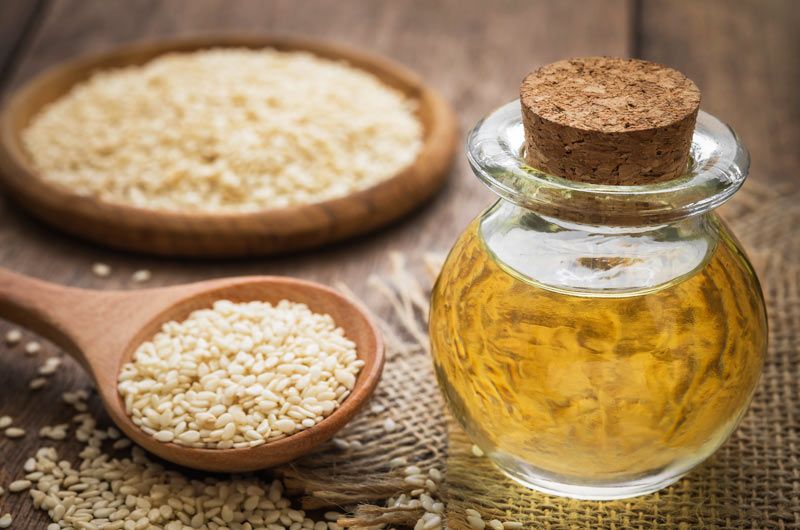5 Reasons Why Is Sesame Oil So Expensive - Hidden Costs
Written By James Morgan
SEO Meta Description: Discover why sesame oil is so expensive and explore the factors that contribute to its high cost, from production challenges to its culinary benefits.
Sesame oil has become a popular choice among barbecue enthusiasts for its unique flavor and numerous health benefits. You might have noticed it is pricier than other cooking oils. Let's unravel the mystery behind the high cost of sesame oil.

The Intricate Journey of Sesame Oil Production
Cultivation of Sesame Seeds
Sesame seeds are largely grown in regions with specific climates, such as India, China, and parts of Africa. The conditions required for optimal growth limit the widespread cultivation of sesame plants.
Harvesting Process
Harvesting sesame seeds is a labor-intensive task. The seeds are harvested by hand in many regions to avoid damage, adding to the overall cost of the oil.
Oil Extraction Techniques
The extraction process of sesame oil is complex. Cold pressing, a preferred method, retains the oil's nutritional value but yields less oil, thus making it more expensive.

Quality and Purity
High-Quality Standards
Top-grade sesame oil undergoes rigorous quality control checks. Ensuring the oil is free from contaminants and impurities adds to production costs.
Pure Sesame Oil
Ensuring the oil is 100% pure sesame oil without adulteration is crucial. This purity is achieved through intensive quality checks and ethical sourcing.

Culinary and Health Benefits
Unique Flavor Profile
Sesame oil is cherished for its nutty flavor, which enhances the taste of many dishes, particularly barbecue recipes. This unique flavor drives up demand.
Health Benefits
Rich in antioxidants and unsaturated fats, sesame oil offers numerous health benefits. Its nutritional profile justifies the premium price.

Market Demand and Supply
Increasing Demand
As more people discover and appreciate the benefits and flavors of sesame oil, demand has surged. Meeting this demand requires increased production, often leading to higher prices.
Supply Chain Challenges
From farming to final packaging, the logistical challenges and associated costs are significant. Any disruptions in the supply chain can lead to price hikes.
Geographical Factors
Import Costs
Sesame oil is often imported, which includes tariffs, shipping costs, and other fees, adding to the final price.
Regional Variations
Prices can vary based on where you buy sesame oil. Local varieties might be cheaper, but imported high-quality oils tend to be pricier.
Packaging and Branding
Premium Packaging
The oil is often packaged in high-quality, light-resistant bottles to maintain freshness. Premium packaging contributes to the overall cost.
Brand Positioning
Brands that position themselves as premium often charge more to reflect their market stance. Marketing and branding expenses are factored into the price.
Sustainable and Ethical Practices
Fair Trade Certifications
Ethically sourced sesame oil that adheres to fair trade practices ensures fair wages for farmers. This ethical approach can increase the price.
Sustainable Farming
Sustainable farming practices help protect the environment but can be more costly to implement, resulting in higher oil prices.
FAQs About Sesame Oil
Why is cold-pressed sesame oil more expensive?
Cold-pressed sesame oil retains more nutrients and flavor, but the process yields less oil and is more labor-intensive.
Is sesame oil worth the price?
Yes, for its health benefits and unique flavor profile, many find sesame oil well worth the investment.
Can I use sesame oil for high-heat cooking?
Yes, while unrefined sesame oil is best for low to medium heat, refined sesame oil can be used for high-heat cooking.
How can I store sesame oil to maintain its quality?
Store sesame oil in a cool, dark place in a tightly sealed bottle. Refrigeration can extend its shelf life.
Why does sesame oil vary in color?
The color can range from pale yellow to dark brown, depending on whether the seeds were toasted and the extraction method used.
What are the different types of sesame oil?
There are two main types of sesame oil: toasted, which has a rich, nutty flavor, and untoasted, which is lighter and more neutral.
Conclusion
Sesame oil's high cost reflects its complex production process, quality standards, and numerous benefits. Although it is more expensive than other oils, its unique flavor and health advantages make it a valuable addition to any barbecue enthusiast's pantry. Explore more about the benefits of sesame oil and consider whether this premium oil fits your cooking needs.
For more insights on cooking oils, check out these posts on our blog: Smoke Point of Avocado Oil, Sweet Almond Oil Good For, How to Make Sesame Oil.
As an Amazon Associate, I earn from qualifying purchases.



